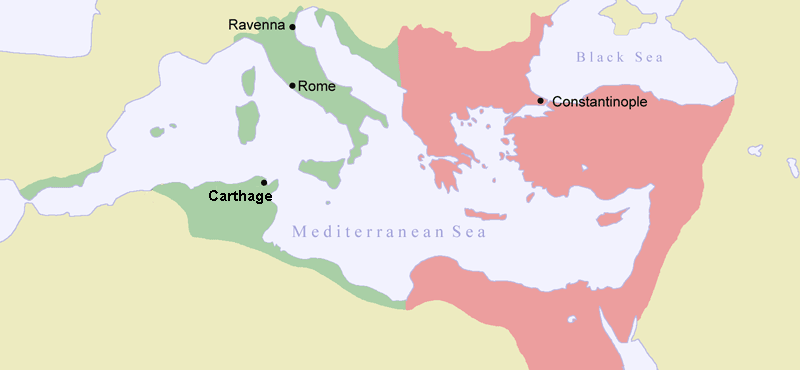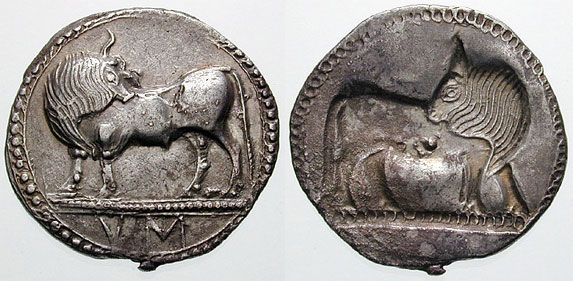|
Aethilla
In Greek mythology, Aethilla or Aethylla (Ancient Greek: Αἴθιλλα or Αἴθυλλα) was Trojan princess as a daughter of King Laomedon and sister of Priam, Lampus, Hicetaon, Clytius, Hesione, Cilla, Astyoche, Proclia, Medesicaste and Clytodora.Dionysius of Halicarnassus, ''Antiquitates Romanae'1.62.2/ref> Mythology After the fall of Troy Aethilla became the prisoner of Protesilaus, who took her, together with other captives, with him on his voyage home. He landed in Thrace in order to take in fresh water. While Protesilaus had gone inland, Aethilla persuaded her fellow prisoners to set fire to the ships. As a result of this being done, the Greeks were forced to remain on the spot and founded the town of Scione. According to other authors, the event took place in Italy; in commemoration of it, the nearby river received the name Nauaethus ("of the burning ships"), while Aethilla, Astyoche, and Medesicaste were surnamed the ''Nauprestidai'' ("they who set fire to ships" ... [...More Info...] [...Related Items...] OR: [Wikipedia] [Google] [Baidu] |
Laomedon
In Greek mythology, Laomedon (; , ''Lāomédōn'', "ruler of the people") was a Troy, Trojan king, son of Ilus (son of Tros), Ilus and thus nephew of Ganymede (mythology), Ganymede and Assaracus. Laomedon was variously identified with different parents and siblings, as well as numerous children, including Priam and Tithonus. His possible wives were Placia, Strymo, Zeuxippe, or Leucippe. Laomedon owned magical horses with divine parentage, a gift from Zeus to his grandfather Tros in compensation for kidnapping Tros's son Ganymede. Zeus sent Poseidon and Apollo to serve Laomedon as punishment for a conspiracy against Zeus. The two gods built walls around Troy, but Laomedon refused to pay them, leading to a pestilence and a sea monster attacking the city. To end the calamities, Laomedon had to sacrifice his daughter Hesione to the sea monster. Heracles arrived and agreed to save Hesione in exchange for the magical horses, but Laomedon went back on his promise, causing Heracles to ... [...More Info...] [...Related Items...] OR: [Wikipedia] [Google] [Baidu] |
Protesilaus
In Greek mythology, Protesilaus (; ) was a Greek hero, hero in the ''Iliad'' who was venerated at Temenos, cult sites in Thessaly and Thrace. Protesilaus was the son of Iphiclus (mythology), Iphiclus, a "lord of many sheep"; as grandson of the eponymous Phylacos, he was the leader of the Phylace (Thessaly), Phylaceans. Gaius Julius Hyginus, Hyginus surmised that he was originally known as Iolaus—not to be confused with Iolaus, the nephew of Heracles—but was referred to as "Protesilaus" after being the first (, ''protos'') to leap ashore at Troy, and thus the first to die in the war.Hyginus. ''Fabulae'', 103. Description In the account of Dares Phrygius, Dares the Phrygian, Protesilaus was illustrated as ". . .fair-skinned, and dignified. He was swift, self-confident, and even rash." Mythology Protesilaus was one of the suitors of Helen. He brought forty black ships with him to Troy, drawing his men from "flowering" Pyrasus, coastal Antron and Pteleos, Pteleus, "deep in gra ... [...More Info...] [...Related Items...] OR: [Wikipedia] [Google] [Baidu] |
Clytodora
Clytodora (Ancient Greek: Κλυτοδώρα) is a name in Greek mythology that may refer to: *Clytodora, a Trojan princess as the daughter of Laomedon, probably either by Placia, Strymo (or Rhoeo), Leucippe or Zeuxippe. Clytodora was the (half) sister of Priam, Astyoche, Lampus, Hicetaon, Clytius, Cilla, Proclia, Aethilla, Medesicaste, and Hesione. She became the queen of Dardania when she married Assaracus and became the mother of Capys.Dionysius of Halicarnassus, ''Antiquitates Romanae'1.62.2/ref> In some accounts, the wife of Assaracus was called Hieromneme, the naiad daughter of Simoes.Apollodorus3.12.2/ref> *Clytodora, possible spouse of Minyas and mother of Clymene (Periclymene), Orchomenus, Presbon, Athamas,Scholia on Apollonius Rhodius, 1.230 Diochthondas and Eteoclymene.Scholia ad Pindar, ''Pythian Odes'' 4.120 Notes References * Dionysus of Halicarnassus, ''Roman Antiquities.'' English translation by Earnest Cary in the Loeb Classical Library, 7 ... [...More Info...] [...Related Items...] OR: [Wikipedia] [Google] [Baidu] |
Astyoche
The name Astyoche (; Ancient Greek: Ἀστυόχη means 'possessor of the city') or Astyocheia was attributed to the following individuals in Greek mythology: *Astyoche, naiad daughter of the river god Simoeis, mother of Tros by Erichthonius. *Astyoche, a Trojan princess as the daughter of King Laomedon by Strymo, Placia or Leucippe, sister of Priam, wife of Telephus and mother of Eurypylus (some call her daughter of Priam and wife of Eurypylus). She was bribed by Priam with a gold vine to persuade Eurypylus to go to the Trojan War, which resulted in him being killed in the battle (cf. the story of Eriphyle). Together with Aethilla and Medesicaste, she was taken captive after the sack of Troy and set fire to the Greek ships during their stay on the Italian coast. *Astyoche, a Minyan princess as the daughter of King Actor of Orchomenus, son of Azeus. She was the mother of Ascalaphus and Ialmenus with Ares. The latter lay with her in secret when the maiden entered into he ... [...More Info...] [...Related Items...] OR: [Wikipedia] [Google] [Baidu] |
Scione
Scione or Skione () was an ancient Greek city in Pallene, the westernmost headland of Chalcidice, on the southern coast east of the modern town of Nea Skioni. Scione was founded by settlers from Achaea; the Scionaeans claimed their ancestors settled the place when their ships were blown there by the storm that caught the Achaeans on their way back from Troy. It "was situated on one summit of a two-crested hill and on the slopes toward the sea... The hill with the fortifications and the pottery fragments constituted the acropolis of ancient Scione and the hill beyond was that on which the defenders encamped 'before the city.'" It was a member of the Delian League. Its moment of historical importance came during the Peloponnesian War, when just after the truce between Sparta and Athens in early 423 BCE, Scione revolted against Athens and was encouraged by the Spartan general Brasidas with promises of support. The Athenians sent a fleet to retake Mende and Scione; after ... [...More Info...] [...Related Items...] OR: [Wikipedia] [Google] [Baidu] |
Priam
In Greek mythology, Priam (; , ) was the legendary and last king of Troy during the Trojan War. He was the son of Laomedon. His many children included notable characters such as Hector, Paris, and Cassandra. Etymology Most scholars take the etymology of the name from the Luwian 𒉺𒊑𒀀𒈬𒀀 (Pa-ri-a-mu-a-, or “exceptionally courageous”), attested as the name of a man from Zazlippa, in Kizzuwatna. A similar form is attested transcribed in Greek as ''Paramoas'' near Kaisareia in Cappadocia. Some have identified Priam with the historical figure of Piyama-Radu, a warlord active in the vicinity of Wilusa. However, this identification is disputed, and is highly unlikely, given that he was known in Hittite records as being an ally of the Ahhiyawa against Wilusa. A popular folk etymology derives the name from the Greek verb , meaning 'to buy'. This in turn gives rise to a story of Priam's sister Hesione ransoming his freedom with a veil, from Heracles, thereby 'buying ... [...More Info...] [...Related Items...] OR: [Wikipedia] [Google] [Baidu] |
Medesicaste
In Greek mythology, the name Medesicaste () refers to two women of the Trojan royal house: * Medesicaste, a daughter of Laomedon and thus a sister of Priam. Together with her sisters Aethilla and Astyoche, she was taken captive by the Greeks after the end of the Trojan War; the three sisters set fire to the Greek ships, causing the crew to remain and settle at the place they were staying at (either Italy or Thrace). * Medesicaste, an illegitimate daughter of Priam and wife of Imbrius.Homer, ''Iliad'' 13.173; Apollodorus, 3.12.5; Pausanias, 10.25.9 See also * for Jovian asteroid 4715 Medesicaste Notes References * Apollodorus, ''The Library'' with an English Translation by Sir James George Frazer, F.B.A., F.R.S. in 2 Volumes, Cambridge, MA, Harvard University Press; London, William Heinemann Ltd. 1921. ISBN 0-674-99135-4Online version at the Perseus Digital Library. [...More Info...] [...Related Items...] OR: [Wikipedia] [Google] [Baidu] |
Conon (mythographer)
Conon (, ''gen''.: Κόνωνος) was a Greek grammarian and mythographer of the age of Augustus (who lived 63 BC – 14 AD), the author of a work titled (Narrations), addressed to Archelaus Philopator, king of Cappadocia. It was a collection of fifty narratives relating to the mythical and heroic period, and especially the foundation of colonies. An epitome of the work was preserved in the '' Bibliotheca'' of Photius, the 9th-century patriarch of Constantinople Constantinople (#Names of Constantinople, see other names) was a historical city located on the Bosporus that served as the capital of the Roman Empire, Roman, Byzantine Empire, Byzantine, Latin Empire, Latin, and Ottoman Empire, Ottoman empire .... Photius commends Conon's Attic style, and remarks that Nicolaus Damascenus borrowed much from him. There are separate editions of this abstract by Gale, by Teucher, and Kanne. Dion ChrysostomOr. xviii. torn. i. p. 480. mentions a rhetorician of this name, who may pos ... [...More Info...] [...Related Items...] OR: [Wikipedia] [Google] [Baidu] |
Stephanus Of Byzantium
Stephanus or Stephen of Byzantium (; , ''Stéphanos Byzántios''; centuryAD) was a Byzantine grammarian and the author of an important geographical dictionary entitled ''Ethnica'' (). Only meagre fragments of the dictionary survive, but the epitome is extant, compiled by one Hermolaus, not otherwise identified. Life Nothing is known about the life of Stephanus, except that he was a Greek grammarian who was active in Constantinople, and lived after the time of Arcadius and Honorius, and before that of Justinian II. Later writers provide no information about him, but they do note that the work was later reduced to an epitome by a certain Hermolaus, who dedicated his epitome to Justinian; whether the first or second emperor of that name is meant is disputed, but it seems probable that Stephanus flourished in Byzantium in the earlier part of the sixth century AD, under Justinian I. The ''Ethnica'' Stephanos' work, originally written in Greek, takes the form of an alphabetical ... [...More Info...] [...Related Items...] OR: [Wikipedia] [Google] [Baidu] |
Etymologicum Magnum
''Etymologicum Magnum'' (, ) (standard abbreviation ''EM'', or ''Etym. M.'' in older literature) is the traditional title of a Greek lexical encyclopedia compiled at Constantinople by an unknown lexicographer around 1150 AD. It is the largest Byzantine lexicon and draws on many earlier grammatical, lexical and rhetorical works. Its main sources were two previous ''etymologica'', the so-called '' Etymologicum Genuinum'' and the '' Etymologicum Gudianum''. Other sources include Stephanus of Byzantium, the ''Epitome'' of Diogenianus, the so-called ''Lexicon'' Αἱμωδεῖν (''Haimōdeῖn''), Eulogius’ Ἀπορίαι καὶ λύσεις (''Ἀporίai kaὶ lύseis''), George Choeroboscus’ ''Epimerismi ad Psalmos'', the ''Etymologicon'' of Orion of Thebes, and collections of ''scholia''. The compiler of the ''Etymologicum Magnum'' was not a mere copyist; rather he amalgamated, reorganised, augmented and freely modified his source material to create a new and individual ... [...More Info...] [...Related Items...] OR: [Wikipedia] [Google] [Baidu] |
Sybaris
Sybaris (; ) was an important ancient Greek city situated on the coast of the Gulf of Taranto in modern Calabria, Italy. The city was founded around 720 BC by Achaeans (tribe), Achaean and Troezenian settlers and the Achaeans also went on to found the nearby great city of Crotone, Kroton 10 years later. Sybaris amassed great wealth thanks to its fertile land and busy port so that it was known as the wealthiest colony of the Greek Archaic world. Its inhabitants became famous among the Greeks for their hedonism, feasts, and excesses, to the extent that "sybarite" and "sybaritic" have become bywords for opulence, luxury, and outrageous pleasure-seeking. Sybaris also ruled over smaller colonies throughout the area, and had an ''acropolis'' at Timpone della Motta near Francavilla Marittima about 10 km distant. The city of Sybaris was destroyed in about 510 BC by its neighbour Kroton and its population driven out, but its colonies in the area continued to exist. It was replaced ... [...More Info...] [...Related Items...] OR: [Wikipedia] [Google] [Baidu] |


